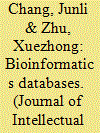|
|
|
Sort Order |
|
|
|
Items / Page
|
|
|
|
|
|
|
| Srl | Item |
| 1 |
ID:
101073


|
|
|
|
|
| Publication |
2010.
|
| Summary/Abstract |
Ambush marketing has emerged in recent years as an effective, though controversial, weapon in the arsenal of marketing departments. Various corporations have indulged in ambush marketing to exploit international events such as the Olympics, Football World Cup, or the Commonwealth Games. This paper seeks to examine ambush marketing as an intellectual property infringement and suitability of the current IP legislations to tackle it. Primary data such as case laws and secondary data such as articles and parallel provisions with regard to IPR have been referred, which show that due to the absence of principle legislations and case precedents, corporations indulging in ambush marketing are able to get away scot-free. To overcome this problem, various countries such as South Africa, New Zealand, Australia, China, England, Brazil and Canada have brought out amendments or legislations defining 'ambush marketing' as a specific type of IPR infringement and fixing liability for the same. It is time that India considers introducing such a legislation not just because its peers have taken such a step but because in the light of large scale events being organized in the country, there is a need to protect legitimate sponsors.
|
|
|
|
|
|
|
|
|
|
|
|
|
|
|
|
| 2 |
ID:
101072


|
|
|
|
|
| Publication |
2010.
|
| Summary/Abstract |
Intellectual property (IP) protection for bioinformatics databases plays a key role in accelerating development of biological sciences and biotechnological industry. This paper presents current and global position of IP protection in bioinformatics database. A protection method has been proposed after analysing characteristics of bioinformatics databases and considering different database protection methods. Further, the paper seeks to analyse the diffusion process of biological information and develops an argument that bioinformatics primary database should be put in public domain, though they may be given financial subsidies by the government or other public funds according to the diffusion phase of biological information. Suitable methods of IP protection in the bioinformatics secondary database have been suggested.
|
|
|
|
|
|
|
|
|
|
|
|
|
|
|
|
| 3 |
ID:
101070


|
|
|
|
|
| Publication |
2010.
|
| Summary/Abstract |
A patent right provides the first and foremost form of protection for inventions. Patent regimes exist in almost every country. Despite convergence specially pushed through TRIPS, there are still important differences between these regimes. Lesser forms of patent protection for inventions, namely, utility models or short term or petty patents, constitute one of these fundamental differences. This article examines the pros and cons of these systems and comes up with the argument that such rights are necessary to foster innovation in a capitalist economy. The article further asserts that such utility models may serve to remedy the shortcomings of the patent system, provided that they are enforced within a legal structure conducive to innovation, i.e. complemented with certain restrictions envisaged in the relevant intellectual property legislation and conditioned by effective enforcement of antitrust laws.
|
|
|
|
|
|
|
|
|
|
|
|
|
|
|
|
| 4 |
ID:
101069


|
|
|
|
|
| Publication |
2010.
|
| Summary/Abstract |
Do intellectual property rights (IPR) affect foreign direct investment (FDI) into emerging economies? While conventional wisdom supports a strong IPR-FDI relationship, the empirical evidence is both mixed and suffers from several shortcomings. To help resolve this paradox, this article investigates the effects of IPR on US FDI in 22 emerging economies using data from 2006 to 2008. It tests two competing, independent measures of IPR protection, as well as disaggregated FDI data to investigate the effects of IPR protection on investments across nine industries economy-wide, and across eight sectors within the manufacturing industry. The empirical results consistently fail to support the hypothesis that IPR protection strongly affects advanced country FDI into emerging economies. Therefore, developing countries may have considerable leeway in IPR design and enforcement; IPR regimes can be tailored to fit a developing country's domestic socio-economic and cultural conditions without affecting it as a destination for foreign investment. IPRs are not an end-in-themselves, rather they are a means by which to increase investment in innovative activity; they should therefore be designed and enforced with this goal in mind.
|
|
|
|
|
|
|
|
|
|
|
|
|
|
|
|
| 5 |
ID:
101071


|
|
|
|
|
| Publication |
2010.
|
| Summary/Abstract |
This article examines licensing as a fundamental mode of technology transfer and the rationale behind grant of licences. The article also explores legal and institutional aspects of technology transfer, particularly, patent licensing in a global context. Patent licensing is analysed through case studies from the perspective of developing countries.
|
|
|
|
|
|
|
|
|
|
|
|
|
|
|
|
| 6 |
ID:
101074


|
|
|
|
|
| Publication |
2010.
|
| Summary/Abstract |
International circumstances, Iran's special context and its legal system have often been blamed for the relative lack of attention on the part of Iranian scientists towards Intellectual Property Rights (IPR). In spite of these odds, however, the Iran Nanotechnology Initiative Council (INIC) launched a programme to overcome existing shortcomings and encourage nanotechnology researchers to protect their inventions in the country and particularly, overseas. The efficiency and effectiveness of this programme are analysed in this paper. In a country without a national IP policy, successful implementation of this programme could pave the way for extending the same mechanism to other technological fields, although it is unlikely that the deficiencies of Iran's national innovation system could be completely resolved by such sectoral policies.
|
|
|
|
|
|
|
|
|
|
|
|
|
|
|
|
| 7 |
ID:
101075


|
|
|
|
|
| Publication |
2010.
|
| Summary/Abstract |
The World Trade Organization (WTO) was set up in 1995 and has been the custodian of all matters related to the implementation of the TRIPS Agreement endorsed by 153 member countries. WTO is therefore the most important body which monitors and influences working of global intellectual property rights protection in all its member countries. This opinion discusses the impact of Indian Patent Act 2005 on Indian pharmaceutical industry
|
|
|
|
|
|
|
|
|
|
|
|
|
|
|
|
|
|
|
|
|